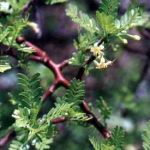| Common Name: |
Linaloe |
| Other Names: |
Mexican linaloe |
| Botanical Name: |
Bursera glabrifolia syn. B. aloexylon |
| Genus: |
Bursera |
| Family: |
Burseraceae |
| Native Location: |
C America |
| Cultivation: |
Well-drained to stony soil in sun or partial shade, with high humidity. |
| Propagation: |
By mallet cuttings in late summer at 15°C (59°F). In the tropics, by ripewood cuttings in the open ground. |
| Harvest: |
Wood is cut from trees at least 20 years old, and chipped and distilled for oil between December and June. Ripe fruits are collected in late summer for oil distillation. |
| Height: |
5-6m (15-20ft) |
| :Width |
3m (10ft) |
| Hardiness: |
Min. 12°C (54°F) |
| Parts Used: |
Woods, fruits, oil |
| Properties: |
A bitter, aromatic, antiseptic herb that reduces inflammation and controls convulsions. |
| Medicinal Uses: |
Internally for nervous tension. Externally for acne, wounds, and dermatitis. |
| Economic Uses: |
Oil is used in perfumery and in the food industry for its slightly bitter lime-like flavor. |
| Bibliography: |
Encylopedia of Herbs by Deni Brown Copyright ©: 1995, 2001 Dorling Kindersley Limited pg 148
|

